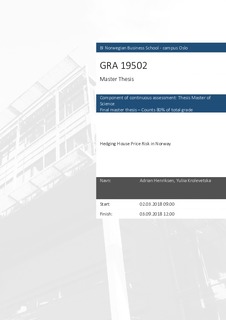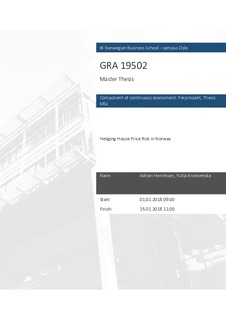| dc.description.abstract | In this paper, we empirically examine the effectiveness of housing futures for
homeowners in Oslo and try to answer the questions of whether housing futures should
be introduced in Norway. If an individual buys a house today at time t for a price S(i,t),
he will be exposed to fluctuations in the value for that house. By following the
methodology described in Bertus et al. (2008) and Schorno et al. (2014), we want to
see if we can hedge the risk of house price fluctuations for homeowners by introducing
futures on a housing index in Oslo. Since there are no actual housing futures available
in Oslo, we have used three different housing indices as a proxy for future returns and
as an underlying for hedging. The results of our analysis show that housing futures, on
the one hand, fail to decrease the variability of homeowners’ returns, and on the other
hand, are quite successful in increasing the actual returns of hedgers. This shows us
that housing futures, if introduced, can attract speculators but not people who actually
need housing derivatives to give away the risk. Therefore, we conclude that housing
futures should not be introduced in Norway for now, and future research is needed in
this area.
Key words: housing futures, house price risk, arithmetic repeat-sales house price index,
geometric repeat-sales house price index. | nb_NO |

